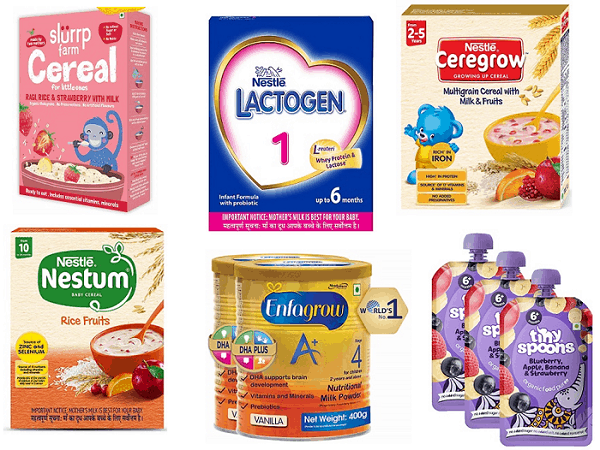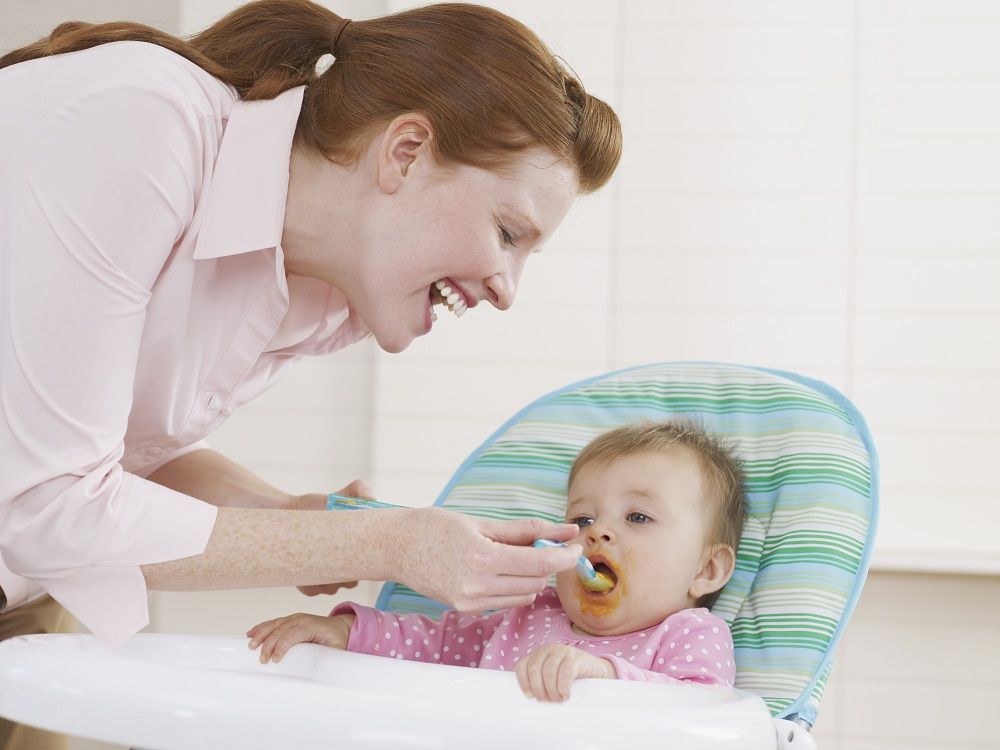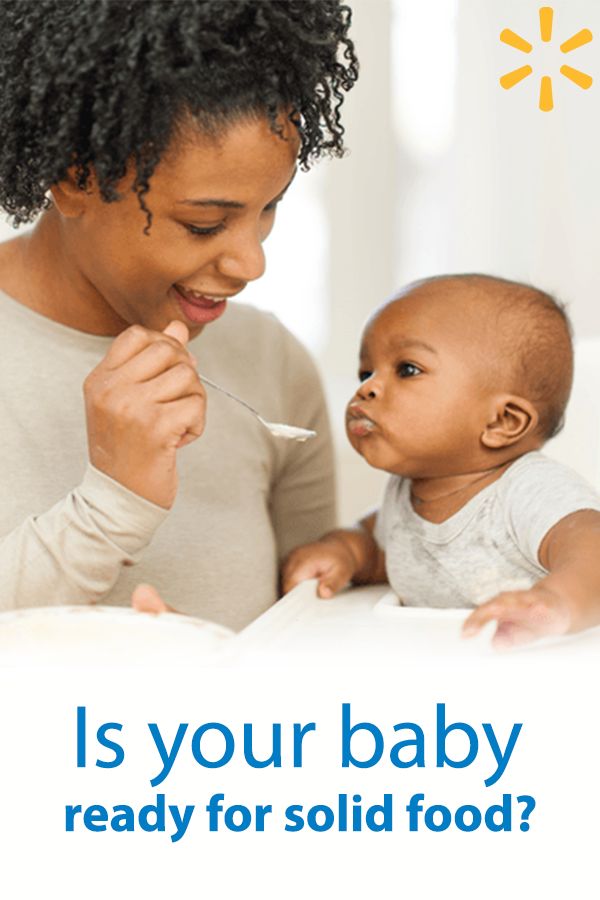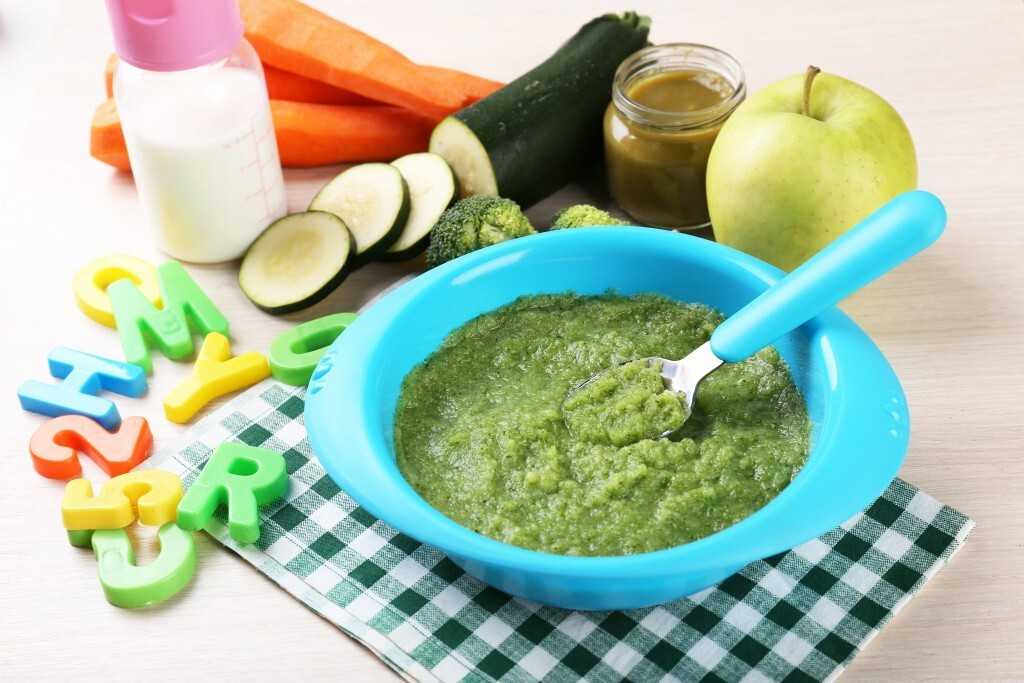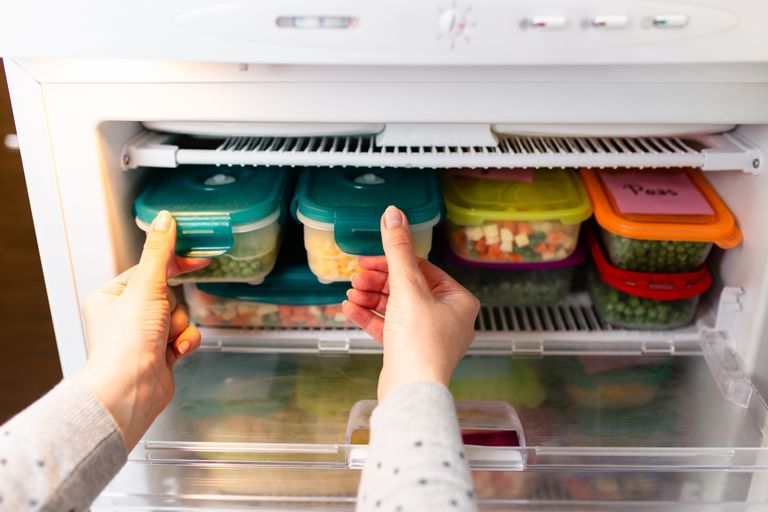How many ounces of baby food per day
Amount and Schedule of Baby Formula Feedings
- In the first week after birth, babies should be eating no more than about 1 to 2 ounces (30 to 60 ml) per feed.
- During the first month, babies gradually eat more until they take 3 to 4 ounces (90 to 120 ml) per feed, amounting to 32 ounces per day. Formula-fed babies typically feed on a more regular schedule, such as every 3 or 4 hours. Breastfed babies usually take smaller, more frequent feedings than formula-fed infants.
If your baby sleeps longer than 4 to 5 hours during the first few weeks after birth and starts missing feedings, wake them up and offer a bottle.
By the end of the first month: Your baby will be up to at least 3 to 4 ounces (120 mL) per feeding, with a fairly predictable schedule of feedings about every 3 to 4 hours.
By 6 months: Your baby will consume 6 to 8 ounces (180–240 mL) at each of 4 or 5 feedings in 24 hours.
Formula feeding based on body weight
On average, your baby should take in about 2½ ounces (75 mL) of infant formula a day for every pound (453 g) of body weight. But they probably will regulate their intake from day to day to meet their own specific needs, so let them tell you when they've had enough. If they become fidgety or easily distracted during a feeding, they're probably finished. If they drain the bottle and continues smacking their lips, they might still be hungry.
There are high and low limits, however. If your baby consistently seems to want more or less than this, discuss it with your pediatrician. Your baby should usually drink no more than an average of about 32 ounces (960 mL) of formula in 24 hours. Some babies have higher needs for sucking and may just want to suck on a pacifier after feeding.
On-demand feeding
Initially it is best to feed your formula-fed newborn a bottle on demand, or whenever they cry with hunger.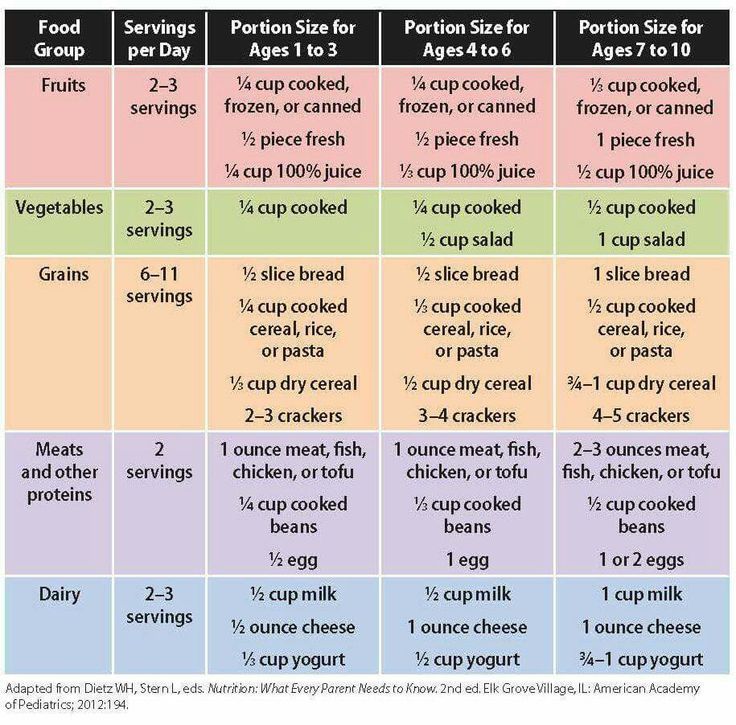 As time passes, your baby will begin to develop a fairly regular timetable of their own. As you become familiar with their signals and needs, you'll be able to schedule their feedings around their routine.
As time passes, your baby will begin to develop a fairly regular timetable of their own. As you become familiar with their signals and needs, you'll be able to schedule their feedings around their routine.
Eating & sleeping patterns
Between 2 and 4 months of age (or when the baby weighs more than 12 lb. [5.4 kg]), most formula-fed babies no longer need a middle-of-the-night feedings. They're consuming more during the day, and their sleeping patterns have become more regular (although this varies considerably from baby to baby). Their stomach capacity has increased, too, which means they may go longer between daytime feedings—occasionally up to 4 or 5 hours at a time.
If your baby still seems to feed very frequently or consume larger amounts, try distracting them with play or with a pacifier. Sometimes patterns of obesity begin during infancy, so it is important not to overfeed your baby.
Getting to know your baby's feeding needs
The most important thing to remember, whether you breastfeed or bottlefeed, is that your baby's feeding needs are unique. No book―or website―can tell you precisely how much or how often they need to be fed or exactly how you should handle them during feedings. You will discover these things for yourself as you and your baby get to know each other.
No book―or website―can tell you precisely how much or how often they need to be fed or exactly how you should handle them during feedings. You will discover these things for yourself as you and your baby get to know each other.
More information
- How Often and How Much Should Your Baby Eat?
- Making Sure Your Baby is Getting Enough Milk
- Is Your Baby Hungry or Full? Responsive Feeding Explained (Video)
- Remedies for Spitty Babies
- Last Updated
- 5/16/2022
- Source
- Adapted from Caring for Your Baby and Young Child: Birth to Age 5 7th Edition (Copyright © 2019 American Academy of Pediatrics)
The information contained on this Web site should not be used as a substitute for the medical care and advice of your pediatrician. There may be variations in treatment that your pediatrician may recommend based on individual facts and circumstances.
There may be variations in treatment that your pediatrician may recommend based on individual facts and circumstances.
How Much Baby Food Your Baby Should Be Eating- A Guide
You’re wondering about the above statement aren’t you? Ask the vast majority of pediatricians and they will all say, “Feed your baby as much as your baby will eat”.
One of the caveats when feeding your baby solid foods is that that you ensure that your baby is still receiving proper amounts of breast milk and/or formula. Solid foods in the early stage are meant for practice. Solids are not meant to provide for baby’s nutrition as breast milk and/or formula are.
How much solid food a baby will be eating depends on a variety of different things.
Don’t forget that your baby is a little human being, and like all of us, she has her own appetite. This will influence to how much solid foods she will be eating. As with adults, some babies will eat more than others due to their individual appetites.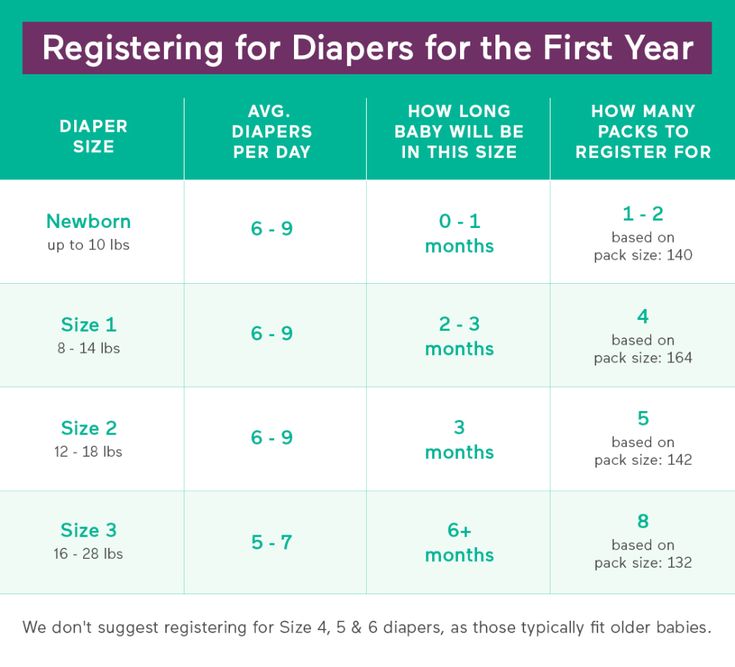 Below are a few key points to remember when feeding your baby.
Below are a few key points to remember when feeding your baby.
- A baby who began solid foods at 4 months of age will most likely be eating more solid foods than the baby who began to eat solid foods at 6 months old.
- A baby who is eating soft diced foods as beginner foods may seem to eat less than the baby who is being spoon-fed purées.
- A baby who is ill or teething may eat less than what has been typical for a few days and then suddenly the typical appetite comes roaring back.
- An infant who is busy exploring the carpet or the new soft-book she has received may be miffed when she is put into a high chair and offered food.
The natural slow down of growth that babies go through will also influence how much they eat. They may be ravenous for a few days or a week or two and then suddenly, they are barely eating. Babies who are coming out of a growth spurt will tend to eat less than they were during the growth spurt.
How do I know if my baby is eating enough solid food?
As all pediatricians will tell you ” Your baby will never starve himself or herself! ” The majority of healthy babies will eat just the right amount of foods that they need. Resist the urge to offer “just one more bite” when baby indicates she’s finished. You do not want to accidentally override your baby’s developing ability to self-regulate his or her feeding by continuing to try and feed your baby. It is important to pay close attention to your baby’s cues as your baby’s feeding patterns will change daily and may be affected by the goings-on around him.
Resist the urge to offer “just one more bite” when baby indicates she’s finished. You do not want to accidentally override your baby’s developing ability to self-regulate his or her feeding by continuing to try and feed your baby. It is important to pay close attention to your baby’s cues as your baby’s feeding patterns will change daily and may be affected by the goings-on around him.
Offering a well balanced diet of solid foods will help ensure that your baby is eating the right amount of the right nutritious foods.
Example feeding “schedule” of solid foods
REMEMBER: 1 ounce equals approximately 2 tablespoons
Before 4 Months:- According to the CDC, babies before 4 months of age should not be fed solid baby foods. Infants should be able to sit up on their own and take food off the spoon before being introduced to solids
- Why can’t we give baby younger than 4 months solids? According to Dr.
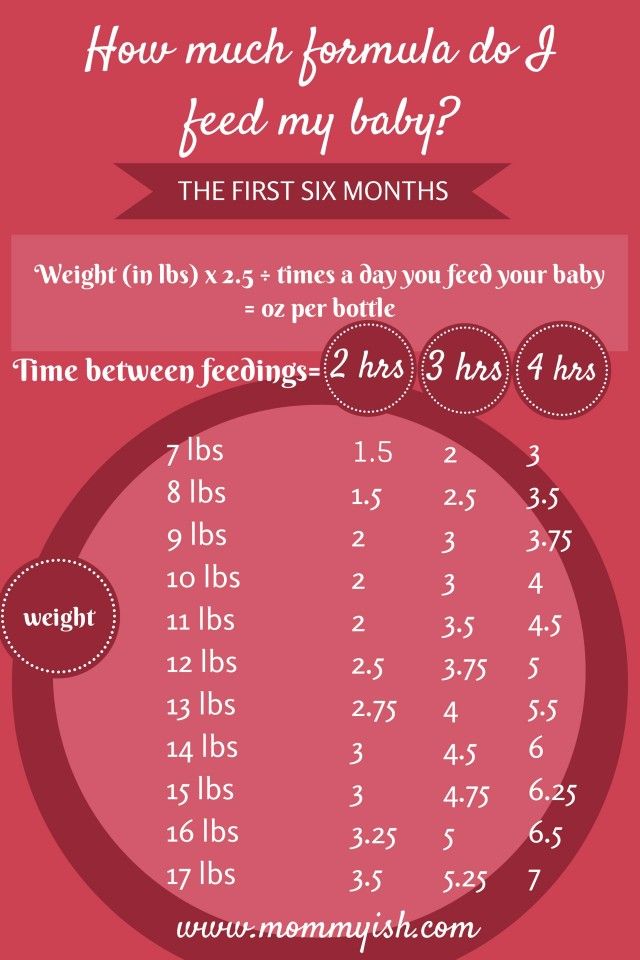 Alice Kuo of UCLA, “Introducing solid foods early means that the baby gets less breast milk over the course of their infancy, and that decreases the ability to get optimal benefits, like protection against infection,”
Alice Kuo of UCLA, “Introducing solid foods early means that the baby gets less breast milk over the course of their infancy, and that decreases the ability to get optimal benefits, like protection against infection,”
What to Feed Baby:
- Breast milk or formula
Breastfeed every 1-3 hours or Formula 18-40 ounces
4-6 Months:
If baby can sit up on their own and still seems hungry after breastfeeding, baby may be ready to start eating solids! Baby should be able to hold their head up, close their mouth around a spoon and “move” the food to the back of their mouth.
What to Feed Baby:
- Breast milk or formula AND
- 1-3 tablespoons of food at 1 or 2 “meals”
Click here to learn what foods you can introduce to a 4-6 month baby
6-8 Months:
Formula and/or Breast Milk is still most important at this age and stage.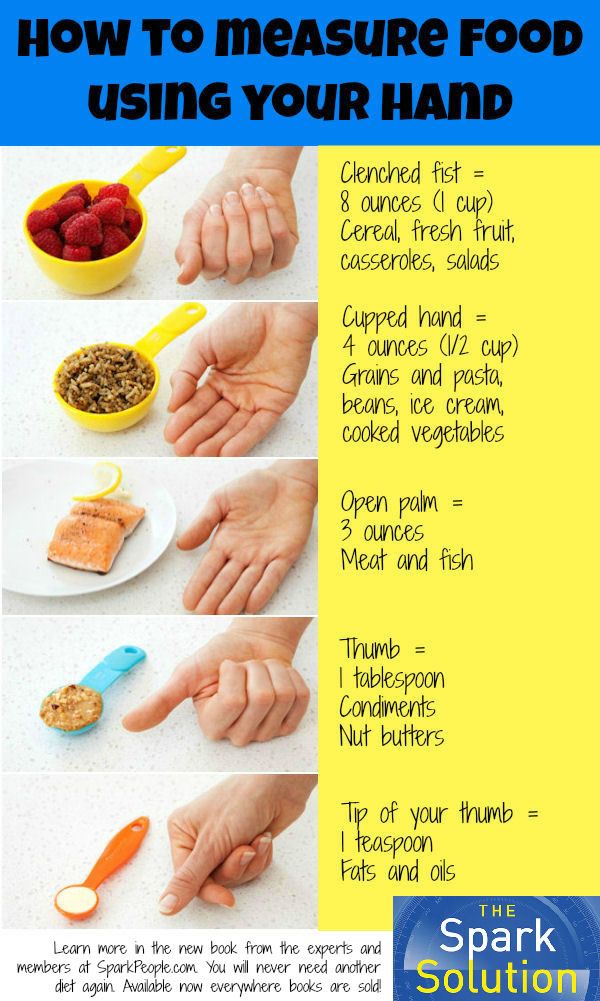 Babies in this range may be just starting solids so the above for 4-6 Months would apply. Some babies may be eating up to 8 ounces of solid foods between 2-3 “meals” during a day.
Babies in this range may be just starting solids so the above for 4-6 Months would apply. Some babies may be eating up to 8 ounces of solid foods between 2-3 “meals” during a day.
What to Feed Baby:
- Breast milk or formula AND
- Foods in this chart for solids OK to give baby 6-8 months, 2-3 “meals” a day
Click here to learn what solid foods you can introduce to a 6-8 month baby
8 to 10 months:
Many babies will be eating 3 “meals” per day at this stage; including a grain, fruit, veggie and a meat or protein source such as eggs.
Again, pay close attention to your baby’s cues as your baby’s feeding patterns will change daily and may be affected by the goings-on around him. Your baby will eat just the right amount for YOUR baby.
What to Feed Baby:
- Breast milk or formula AND
- Foods in this chart for solids OK to give baby 6-8 months, 3 “meals” a day
Click here to lean what solid foods you can introduce to a 8 to 10 month baby
10 to 12 months:
Many babies will be eating 3 “meals” per day at this stage; including a grain, fruit, veggie and a meat or protein source such as eggs.
Again, pay close attention to your baby’s cues as your baby’s feeding patterns will change daily and may be affected by the goings-on around him. Your baby will eat just the right amount for YOUR baby.
What to Feed Baby:
- Breast milk or formula AND
- Foods in this chart for solids OK to give baby 10-12 months, 3 “meals” a day
Click here to lean what solid foods you can introduce to a 10 to 12 month baby
Here are a few things to watch for to ensure that you are not over or under feeding your baby:
Signs that baby may want to continue to eat- Leaning in for the spoon
- Opening the mouth
- Grabbing for food and trying to put it in the mouth
- Closing of the mouth as the spoon comes close
- Spitting out the food that is being fed
- Turning the head away as the spoon comes closer
A healthy well-fed baby should be producing wet diapers regularly as well as producing a bowel movement or two during the day.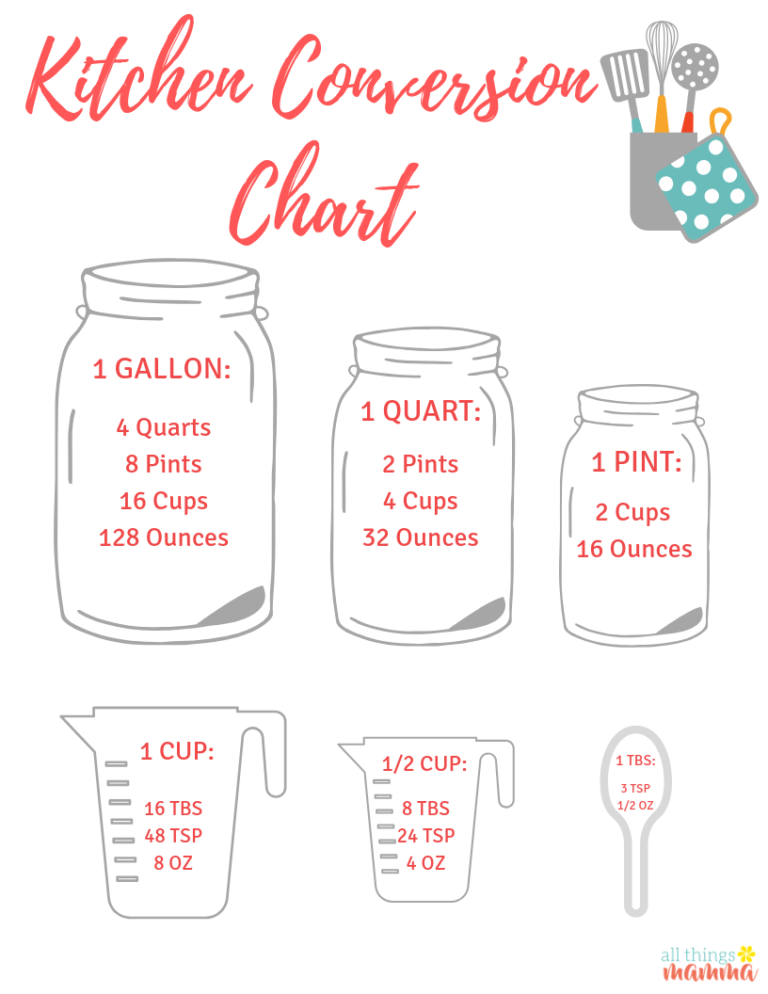
Ensure that you take your baby to the well-child visits as scheduled so that your pediatrician may weigh and measure baby to ensure that your baby has good sustained growth.
If you are ever uncertain about the foods and the amount of solid foods you are feeding your baby, always consult your baby’s pediatrician. Your pediatrician should be able to assist you in validating your feeding routines and also help allay your fears.
Remember, always consult with your pediatrician regarding introducing solid foods to your baby and specifically discuss any foods that may pose allergy risks for your baby.
No two babies will eat the exact same amounts (or foods!) The amount that each eats is just right for that baby!
Suggested Daily “Milk” Intakes for Babies age 0 to 12 months
- 0-3 Months of age:
Breastfeed every 1-3 hours or Formula 18-40 ounces - 4-5 Months of age:
Breastfeed every 2-4 hours or Formula 24-45 ounces - 6-8 Months of age:
Breastfeed every 3-4 hours or Formula 24-37 ounces - 9-12 Months of age:
Breastfeed every 4-5 hours or Formula 24-31 ounces
Whole Cow Milk, as a drink, should not be introduced until 12 months of age. Learn about Introducing Yogurt and Feeding Cheese to your baby.
Learn about Introducing Yogurt and Feeding Cheese to your baby.
Table compiled from Merck Source
Follow Your Baby’s Cues When Feeding Your Baby Solid Foods
Following your baby’s cues during feeding time will ensure that your baby is eating the proper amounts of food for him or her.
There is no “set-in-stone” guideline or chart of exactly how many jars of baby food or how many 8 ounce bottles of formula each baby should be receiving. This is simply because each and every baby is different. Babies will eat as much food and drink as much breast milk and/or formula as they need.
For example: You may wonder how it is possible that your friend’s 7 month old baby is eating 2 whole jars of baby food (8-9 oz) in one day while your 7 month old baby barely manages to eat 3 or 4 baby food cubes (3-4 oz) of food per day. You may also wonder why your baby nurses every 2 hours at 7 months old while your friend’s baby may only nurse every 3 or 4 hours. Again, each baby has different food and milk needs and these needs are just right for the individual baby.
Again, each baby has different food and milk needs and these needs are just right for the individual baby.
Read More About Solid Foods for Baby Food
Ask the vast majority of pediatricians and they will all say, “Feed your baby as much as your baby will eat”.
- Is My Baby Ready for Solid Foods?
- Baby Food Combinations
- Baby Food Allergies
- Iron and Your Baby
- Yogurt for Baby
- Travel with Homemade Baby Food
- Constipation and Your Baby
Remember, always consult with your pediatrician regarding introducing solid foods to your baby and specifically discuss any foods that may pose allergy risks for your baby.
This site complies with the HONcode standard for trustworthy health information:
verify here.
SHARE ON FACEBOOK SHARE ON PINTEREST
Should children drink water when eating solids?
As soon as the child starts solids, you can give him a few sips of expressed milk or water with his solids - some children need this to prevent constipation.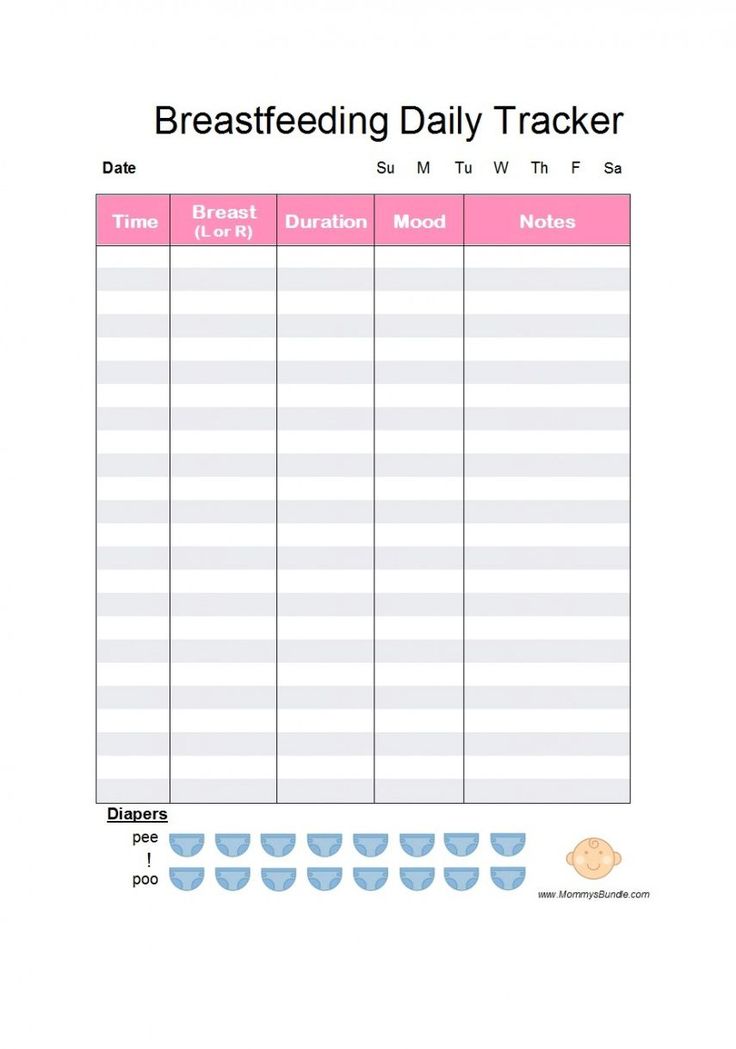 For older children and toddlers, continue to breastfeed and offer water in moderation (4-6 ounces per day) .
For older children and toddlers, continue to breastfeed and offer water in moderation (4-6 ounces per day) .
When should I introduce water to my child?
According to the American Academy of Pediatrics, small amounts of water may be offered starting at 6 months of age while the child is growing and gaining adequately, but water is not required until 12 months of age.
How can I give my 6 months water?
Meet your child to drink from a cup or glass after about 6 months and offer packs of water with meals. Using an open cup or a free flow cup without a valve will help your child learn to drink and is better for your child's teeth.
How much water should a 6 month old drink?
By the time they are 1 month old, their gastric capacity is 2.7 to 5 ounces (80 to 150 ml). By 6 months - when you can introduce small sips of water - they can usually hold about 7 ounces (207 ml) of at a time. Even from 6 months and 1 year old, the amount of water you give your baby should be very limited.
What drinks can a 6 month old baby have?
6. Good drinks for children and children
- Pant's milk is best for baby and is the only food or drink a baby needs until about 6 months of age.
- If the child is formula fed, the child may be offered cooling, boiled water, and formula.
- From about 6 months old, all babies can chill, boil water for a bottle or cup.
is it possible to give 3 months of water?
“ water is not recommended for infants under six months of age because even small amounts will fill up their tiny animals and may interfere with their body's ability to absorb nutrients in breast milk or formula,” Malkoff-Cohen said.
How much water should a 7 month old drink?
6-12 month old baby needs two to eight ounces of water per day on top of the water they get from breast milk/formula. Strabki from their cups during the day usually brings them the water they need.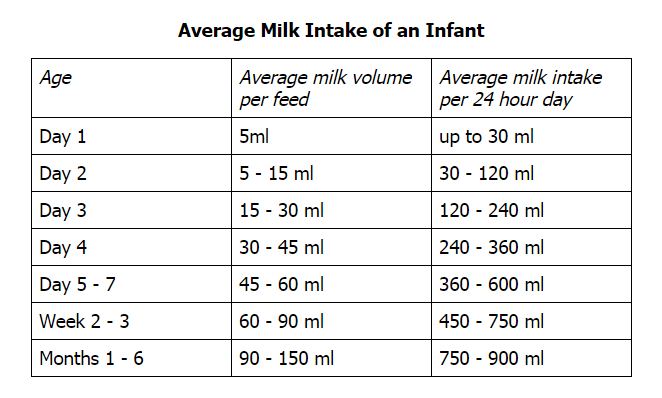
Which water is best for baby formula?
You can use any type of pure water - tap or bottled - to prepare liquid concentrate or powder formula. If you are concerned about the cleanliness of your water supply, talk to your child's doctor or water supplier. Many public water systems will test drinking water upon request.
How many times a day should I feed solids to my 6 month old?
So how much baby food should a 6 month old baby eat? The World Health Organization (WHO) recommends that children eat solid food 2-3 times a day in addition to breast milk or formula.
How much solids should a six month old baby eat?
Start with two to three scoops of soft and mashed potatoes four times a day, which will give her the nutrients she needs without breast milk. From 6 to 8 months, she will need half a cup of soft food four times a day, plus a healthy snack.
Which baby food should I submit first?
Solid products can be added in any order. However, © Meats, Poultry, Beans, and iron-supported iron are recommended as first foods, especially if your baby has been primarily breastfed, as they provide key nutrients.
However, © Meats, Poultry, Beans, and iron-supported iron are recommended as first foods, especially if your baby has been primarily breastfed, as they provide key nutrients.
How much water is too much for a child?
It is permissible to top up water at this time. However, assuming adequate formula or breast milk intake, your baby may not need more than 2-4 ounces of water in a 24-hour period .
Can children drink bottled water?
Yes, You can give bottled water to babies after they are six months old (1). The US Food and Drug Administration says you can give low-fluoride bottled water to your child when needed (2). … this is because bottled water cannot be sterile and may contain too much sulfate or sodium.
At what age can children eat solid food?
Your baby can start eating solid foods around 6 months of age. By the time he or she is 7 or 8 months old, your baby may be eating a variety of foods from different food groups.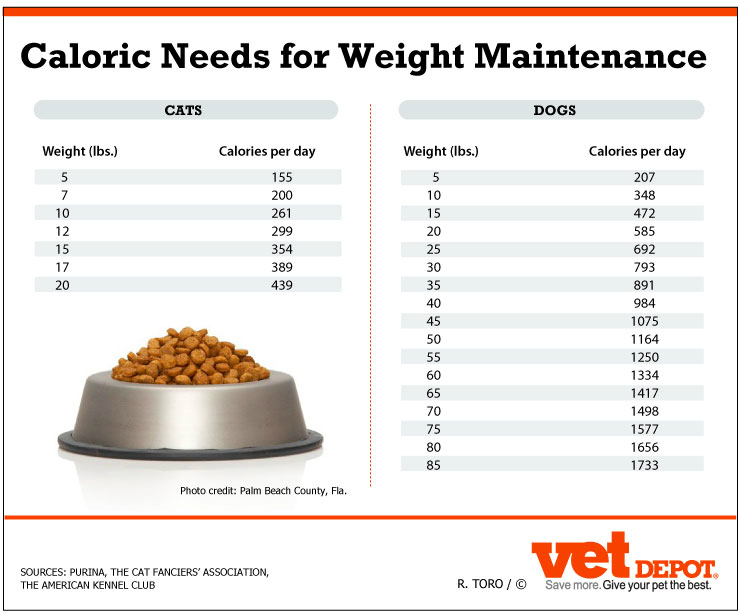 These foods include baby cereals, meats or other proteins, fruits, vegetables, grains, yogurts and cheeses, and more.
These foods include baby cereals, meats or other proteins, fruits, vegetables, grains, yogurts and cheeses, and more.
How much should a 7-month-old baby travel per day?
A seven month old should drink six to eight ounces of the formula, four to six times a day. Breastfeeding: seven months, usually still feeding, about every three or four hours. Pumping: If you are pumping, your baby needs about 25 ounces of breast milk per day.
What should a 7-month-old baby eat per day?
By now, your child's diet should include grains, fruits, vegetables, and meats, and they should eat two to three meals a day. In addition to rice, barley, or oatmeal, you can introduce cereal products that your child can take, such as toast, crackers, and dry cereal.
Can a 3 month old baby have baby food?
The Nutrition Committee says babies can start on solid foods "up to 4 to 6 months". The Committee does not recommend 4 months of age from absolute starting age.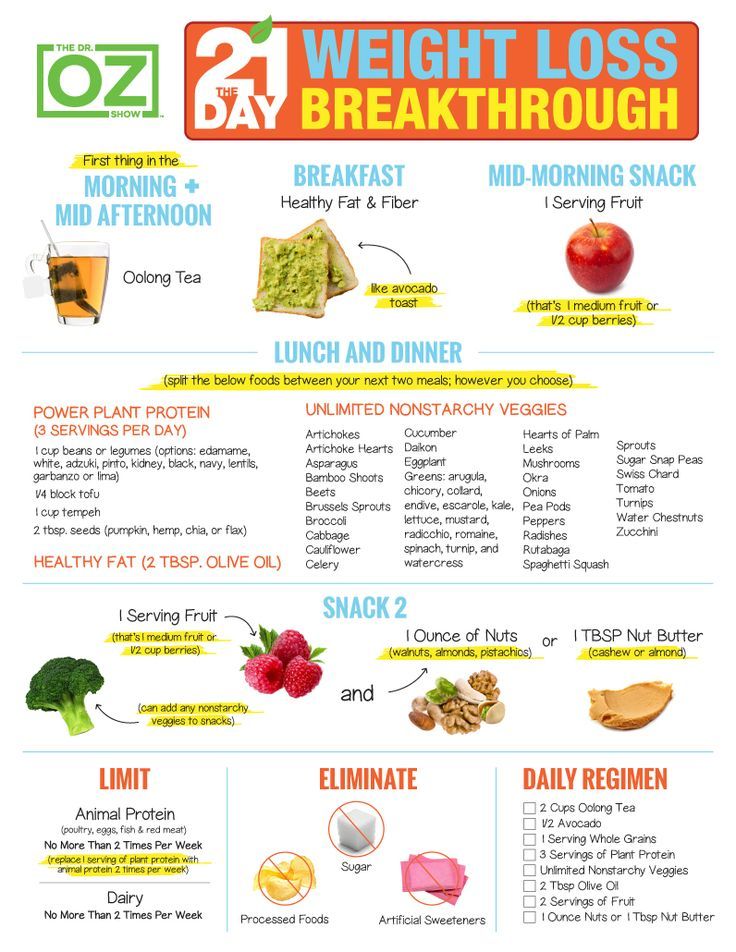 "About four to six months you can start adding solid foods.
"About four to six months you can start adding solid foods.
Can I give my 3 month old pedialitis?
pedialyte should not be given to children under 1 without talking to your pediatrician. Once opened or prepared, the drink should be refrigerated, consumed, or discarded within 48 hours to reduce the risk of contamination with harmful bacteria.
What can a 6 month old eat?
Age: 6 to 8 months
- breast milk or formula plus.
- Pureed or strained fruit (banana, pears, applesauce, peaches, avocados)
- Pureed or strained vegetables (well-cooked carrots, pumpkin, sweet potatoes)
- Pureed or puréed meat (chicken, pork, beef)
- puree puree or puree.
Can a 6 month old baby eat eggs?
You can give your child the whole egg (yolk and white) if your pediatrician recommends it. About 6 months, mash or break one hard-boiled or hard-boiled egg and serve it to your child. For a thinner consistency, add breast milk or water. At around 8 months, ovary pieces are a fantastic finger food.
For a thinner consistency, add breast milk or water. At around 8 months, ovary pieces are a fantastic finger food.
can a 6 month old baby have orange juice?
It is best to wait until the child is 6 months old before offering juice. But even then, pediatricians do not recommend giving juice to an infant. This is because it adds extra calories without a balanced diet in formula and breast milk.
Can a 6 month old baby drink too much water?
New York (Reuters Health) - Babies younger than six months should never be given water to drink, doctors at the Johns Hopkins Children's Center in Baltimore remind parents. Drinking too much water can put children at risk for a potentially life-threatening condition known as water runoff.
Related QNA:
Beech-Nut and Gerber found heavy metals in baby food
Everyone knows that certain types of fish, such as bigay tuna, king mackerel or swordfish, contain mercury and are therefore undesirable on the menu of children and pregnant women.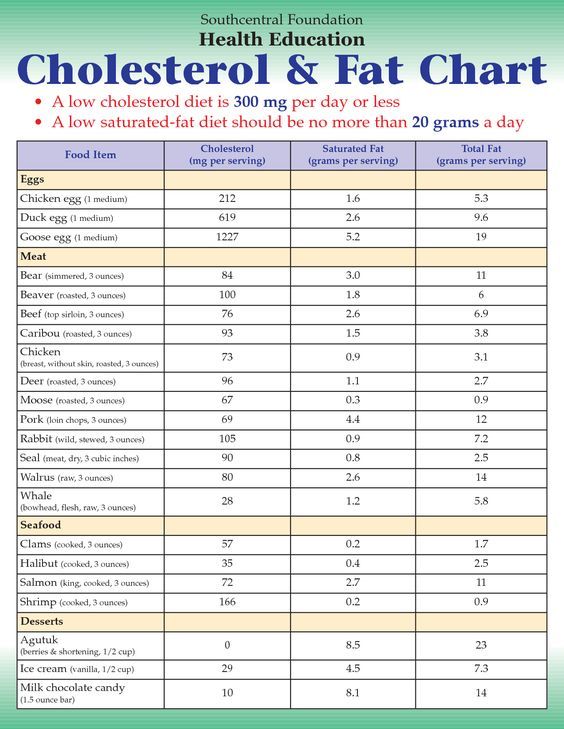 As well as arsenic in certain grains, most notably rice. And what about baby food based on them? Is it really that safe?
As well as arsenic in certain grains, most notably rice. And what about baby food based on them? Is it really that safe?
Today, US baby food sales are about $53 billion, and by 2021, according to Zion Market Research, they will exceed $76 billion. And because children are more receptive to food than adults, Consumer Reports (CR) decided to check for the content heavy metals namely the range of baby food.
In the spring of 2018, CR experts tested 50 popular children's products: cereals, canned fruits and vegetables, packaged meals (for example, turkey and rice dinner), packaged snacks (cookies, crackers, chips, waffles, rice crackers, etc.), by purchasing 3 samples of each product from retailers across the country.
B o Most of the products were from the 2 largest US baby food manufacturers, Beech-Nut and Gerber. Also purchased were Baby Mum-Mum, Earth's Best, Ella's Kitchen, Happy Baby, Parent's Choice (Walmart), Plum Organics and Sprout.
Inspection has shown that some popular baby products on the US market are best avoided:
- In 68% of samples, experts found "alarming" levels of heavy metals (lead, cadmium, mercury and/or inorganic arsenic).
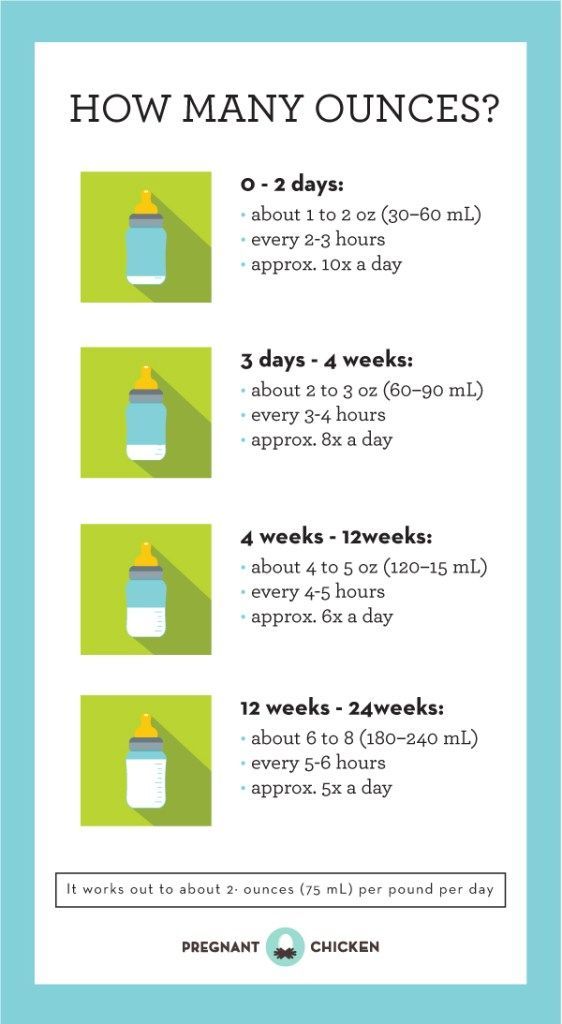
- 15 out of 50 products tested were generally dangerous to the health of a child consuming 1 serving per day or less.
- Rice and/or sweet potato products contained the highest amount of heavy metals.
Of the 50 products, only 16 contained heavy metals that did not exceed the safe limit.
The test results table is shown below.
Consumer Reports test data for each product:
| N/A | Product name | Serving size | Test score | Daily limit |
Meals and Entrées | ||||
| 1. | Gerber Lil' Entrées Chicken & Brown Rice With Peas & Corn | 1 tray | + | Unlimited |
2. | Earth's Best Organic Chicken & Brown Rice | 1 can, 4 oz (113 g) | – | < 1 serving |
| 3. | Earth's Best Turkey, Red Beans & Brown Rice | 1 doypack | – | < 1 serving |
| 4. | Gerber Chicken & Rice | 1 can, 4 oz (113 g) | – | < 1 serving |
| 5. | Gerber Turkey & Rice | 1 can, 4 oz (113 g) | – | < 1 serving |
| 6. | Sprout Organic Baby Food Garden Vegetables Brown Rice With Turkey | 1 doypack | – | < 1 serving |
| 7. | Gerber Lil' Meals White Turkey Stew With Rice & Vegetables* | 1 tray | – | < 0.5 servings |
Fruits and vegetables | ||||
8.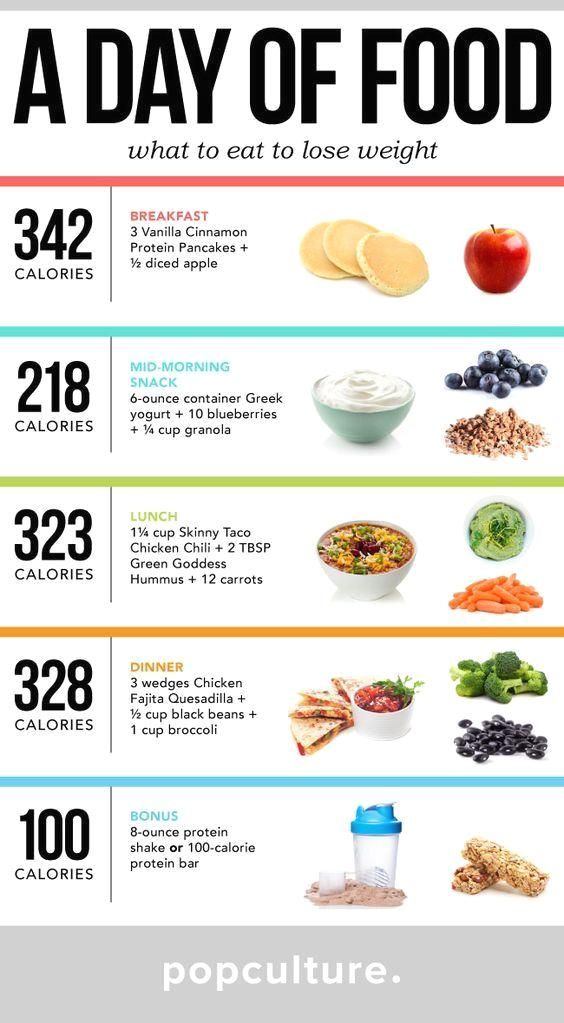 | Beech-Nut Classics Apple, Pear & Banana | 1 can, 4 oz (113 g) | + | Unlimited |
| 9. | Beech-Nut Naturals Carrot, Broccoli, Apple & Strawberry* | 1 can, 4 oz (113 g) | + | Unlimited |
| 10. | Beech-Nut Organic Just Apple & Green Beans | 1 can, 4 oz (113 g) | + | Unlimited |
| 11. | Beech-Nut Organic Peas, Green Beans, and Avocado | 1 doypack | + | Unlimited |
| 12. | Gerber Grabbers Strong Veggies, Broccoli, Carrot, Banana, Pineapple | 1 doypack | + | Unlimited |
| 13. | Gerber Organic Peas, Carrots & Beets* | 1 doypack | + | Unlimited |
14.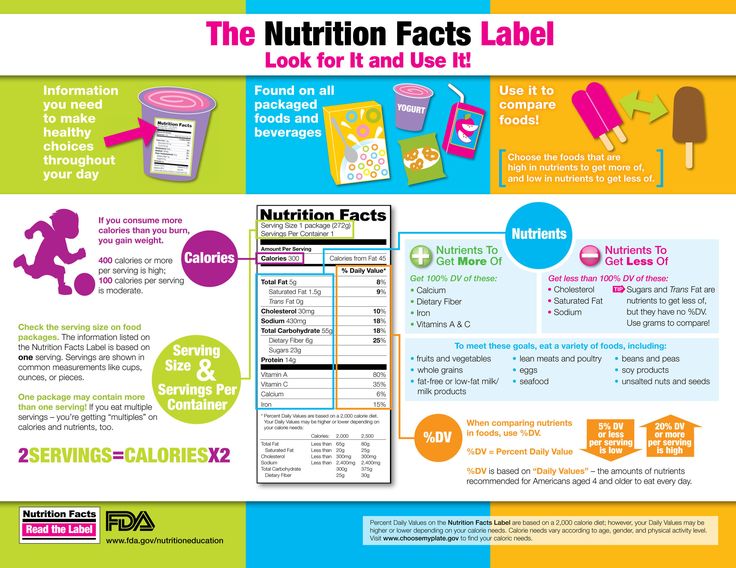 | Happy Baby Organics Purple Carrots, Bananas, Avocados & Quinoa | 1 doypack | + | Unlimited |
| 15. | Gerber Carrot, Pear & Blackberry | 1 container, 4 oz (113 g) | - | < 1 serving |
| 16. | Gerber Carrots Peas & Corn With Lil' Bits* | 1 container, 5 oz (140 g) | – | < 1 serving |
| 17. | Plum Organics Just Sweet Potato Organic Baby Food | 1 doypack | – | < 1 serving |
| 18. | Beech-Nut Classics Sweet Potatoes | 1 can, 4 oz (113 g) | – | < 0.5 servings |
| 19. | Earth's Best Organic Sweet Potatoes, 1st Stage | 1 can, 2.5 (70 g) | – | < 0. |
Flakes | ||||
| 20. | Gerber Breakfast Buddies Hot Cereal With Real Fruit, Apple Cinnamon*
| 1 bowl | + | Unlimited |
| 21. | Beech-Nut Complete Rice Single Grain Baby Cereal
| 0.5 cups | – | < 3 servings |
| 22. | Happy Baby Organics Organic Probiotic Baby Cereal | 4 tbsp. l. | – | < 3 servings |
| 23. | Beech-Nut Complete Oatmeal Whole Grain Baby Cereal | 0.5 cups | – | < 2.5 servings |
| 24. | Beech-Nut Organic Oatmeal Whole Grain Baby Cereal | 0.5 cups | – | < 2.5 servings |
25.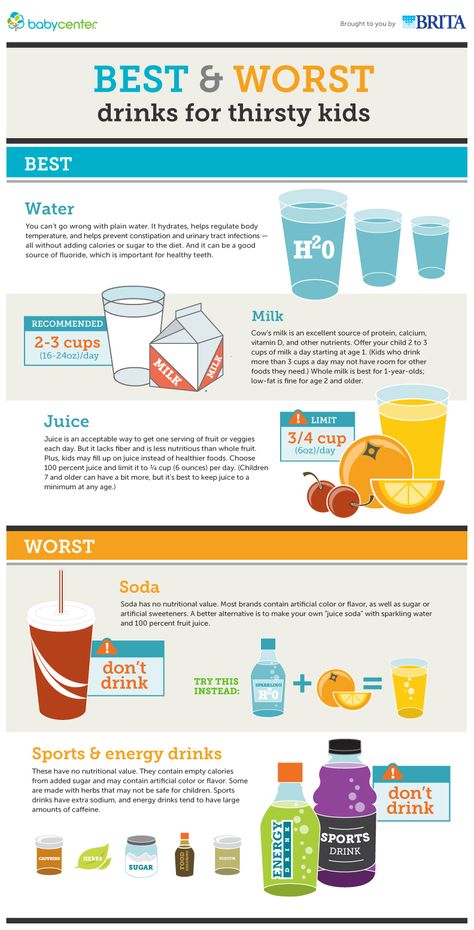 | Earth's Best Organic Whole Grain Oatmeal Cereal | 4 tbsp | – | < 2.5 servings |
| 26. | Gerber Oatmeal Single Grain Cereal | 0.5 cups | – | < 2.5 servings |
| 27. | Gerber Organic Oatmeal Cereal | 0.5 cups | – | < 2.5 servings |
| 28. | Earth's Best Organic Whole Grain Rice Cereal | 4 tbsp. l. | – | < 1 serving |
Snacks | ||||
| 29. | Beech-Nut Quinoa Crispies, Vanilla | 1 block | + | Unlimited |
| 30. | Ella's Kitchen Apples + Strawberries Nibbly Fingers | 0.33 bars | + | Unlimited |
31. | Gerber Graduates Puffs Cereal Snack Strawberry Apple | 0.5 cups | + | Unlimited |
| 32. | Gerber Lil' Beanies Baked Snack Made With Beans, White Cheddar & Broccoli* | 26 pcs. | + | Unlimited |
| 33. | Gerber Lil' Crunchies Baked Corn Snack Mild Cheddar | 16 pcs. | + | Unlimited |
| 34. | Gerber Lil' Crunchies Baked Corn Snack Vanilla Maple | 16 pcs. | + | Unlimited |
| 35. | Gerber Organic Puffs, Puffed Grain Snack, Apple | 0.5 cups | + | Unlimited |
| 36. | Gerber Graduates Arrowroot Cookies | 1 cookie | – | < 6 servings |
37. | Plum Organics Little Yums Organic Teething Wafers, Pumpkin & Banana* | 1 wafer | – | < 5.5 servings |
| 38. | Gerber Graduates Cinnamon Graham Animal Crackers | 2 crackers | – | < 4.5 servings |
| 39. | Gerber Graduates Banana Cookies | 1 cookie | – | < 4 servings |
| 40. | Baby Mum-Mum Banana Rice Rusks | 4 crackers | – | < 3 servings |
| 41. | Baby Mum-Mum Vegetable Rice Rusks | 4 crackers | – | < 3 servings |
| 42. | Gerber Graduates Waffle Wheels Puffed Grain Snack, Banana Cream | 4 pcs. | – | < 3 servings |
43.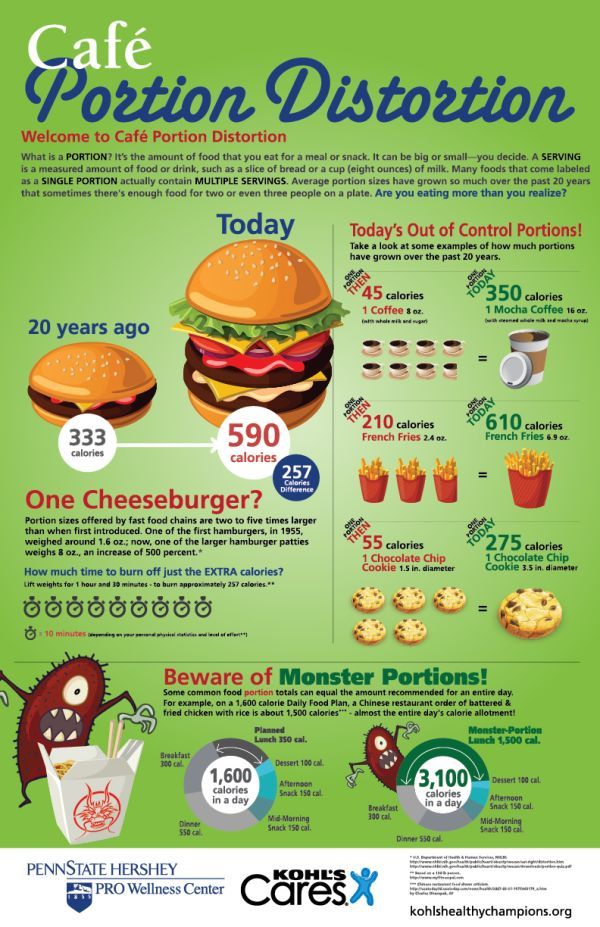 | Gerber Graduates Lil' Biscuits Vanilla Wheat | 1 biscuit | – | < 2.5 servings |
| 44. | Gerber Graduates Cereal Bars, Strawberry Banana | 1 block | – | < 1.5 servings |
| 45. | Parent's Choice (Walmart) Little Puffs Cereal Snack, Strawberry Apple | 0.5 cups | – | < 1.5 servings |
| 46. | Plum Organics Mighty Sticks Whole Grain Snacks, Berry Beet* | 1 pack | – | < 1.5 servings |
| 47. | Sprout Organic Quinoa Puffs Baby Cereal Snack, Apple Kale | 0.33 cups | – | < 1.5 servings |
| 48. | Earth's Best Organic Sunny Days Snack Bars, Strawberry | 1 block | – | < 1 serving |
| 49. | Happy Baby Organics Superfood Puffs, Apple & Broccoli | 0.5 cups | – | < 1 serving |
| 50. | Happy Baby Organics Superfood Puffs, Purple Carrot & Blueberry | 0.5 cups | – | < 1 serving |
(+) - good results
(-) - poor results, alarming
stores.
Organic doesn't mean safe
Many parents will be surprised to find products labeled 9 in a poor results table0161 "organics" . Yes, USDA certified organic products are better than conventional products in many ways (environmental impact, pesticide levels, etc.). However, 20 out of 50 samples tested with this label still contained heavy metals.
As Consumer Reports food label expert Charlotte Wallai explained, organically banned arsenic and lead have been used in pesticides in the past and remain in soil today. Therefore, even raw materials grown according to strict modern standards cannot be completely free from these substances.
Therefore, even raw materials grown according to strict modern standards cannot be completely free from these substances.
How heavy metals get into food
All of them are part of the earth's crust and therefore naturally occur in the environment. However, most of the heavy metals in food come from soil or water contaminated by agriculture or industry, in particular from the use of pesticides, and from the extraction and processing of minerals.
Plants absorb heavy metals from the ground and water, as well as nutrients. However, the "suction" capacity of some crops is much higher than others. Thus, rice absorbs about 10 times more arsenic than other grains.
How heavy metals affect the body
Iron and zinc are also heavy metals, but in reasonable amounts they only benefit the human body. But cadmium, inorganic arsenic, lead and mercury (especially methylmercury) are toxic in any concentration and pose a particular danger to young children. The longer you consume foods containing them, the more harm will be done to the body.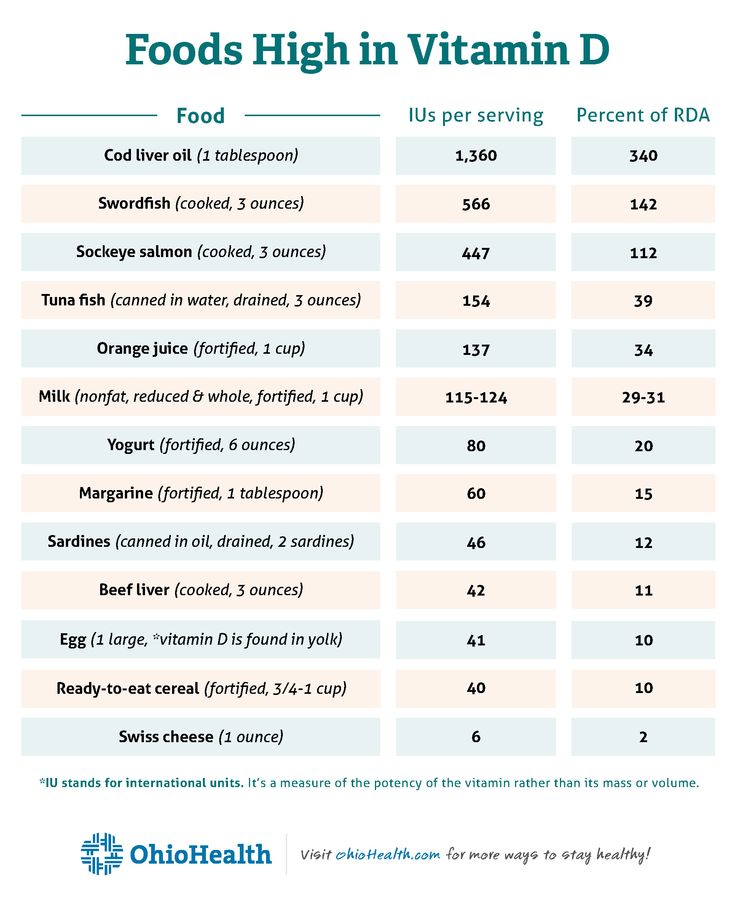 Among the most serious problems are impaired cognitive development and, as a result, a decrease in IQ, behavioral problems (hyperactivity, attention deficit, autism), reproductive problems, the development of bladder, lung and skin cancer.
Among the most serious problems are impaired cognitive development and, as a result, a decrease in IQ, behavioral problems (hyperactivity, attention deficit, autism), reproductive problems, the development of bladder, lung and skin cancer.
Steps parents can take now
According to James Dickerson, Chief Scientist at Consumer Reports, a child's consumption of foods containing heavy metals may not cause health problems right away, but it increases the risk of developing them in the future.
To protect both children and yourself from the accumulation of heavy metals in the body, Dr. Dickerson advises to adhere to the following rules:
1. Eat less rice and products from it. Cereals are often a baby's first solid food because they are easy to swallow. However, both the Food and Drug Administration and the American Academy of Pediatrics recommend giving babies different types of cereals that do not contain large amounts of inorganic arsenic, such as oat and barley-based products.
2. Choose the right rice and cook it right. Brown rice has been shown to contain more inorganic arsenic than white rice. Prefer Basmati from California, India and Pakistan. You need to cook it in a large amount of water - from 6 to 10 parts of water to 1 part of rice. When the rice is ready, drain off the excess water.
3. Limit your consumption of packaged snacks. Many of them contain rice flour and generally do not represent any nutritional value for a growing organism.
4. Don't skimp on chocolate: cocoa powder may contain cadmium and/or lead.
What is being done at the legislative level
Today, the baby food market is not properly regulated by the state, according to Consumer Reports. Many parents are unaware of the presence of heavy metals in the foods they buy for their children because they believe that baby food is produced to stricter standards than other packaged foods.
However, this is not the case. Although the FDA recognizes that heavy metals pose a danger to children's bodies, there are still no regulations governing food safety for children.
Although the FDA recognizes that heavy metals pose a danger to children's bodies, there are still no regulations governing food safety for children.
In 2016, the FDA proposed limiting the allowable content of inorganic arsenic in rice used in children's products to 100 ppb (parts per billion), and in 2013 to limit it in apple juice to 10 ppb (the federal standard for the concentration of arsenic in children's products). drinking water). However, no limit has yet been set.
Based on the results of the Consumer Reports study, the Food and Drug Administration has promised to issue recommendations to manufacturers by the end of 2018: metals - USA .one - for the most vulnerable category of the population - children.
Also FDA stated that "plans to consider a wide range of strategies and actions to reduce the impact" of heavy metals on Americans' health. In particular, consumers will be informed about how to reduce the risks associated with toxic metals, and manufacturers will be encouraged (and forced) to minimize their content in their products.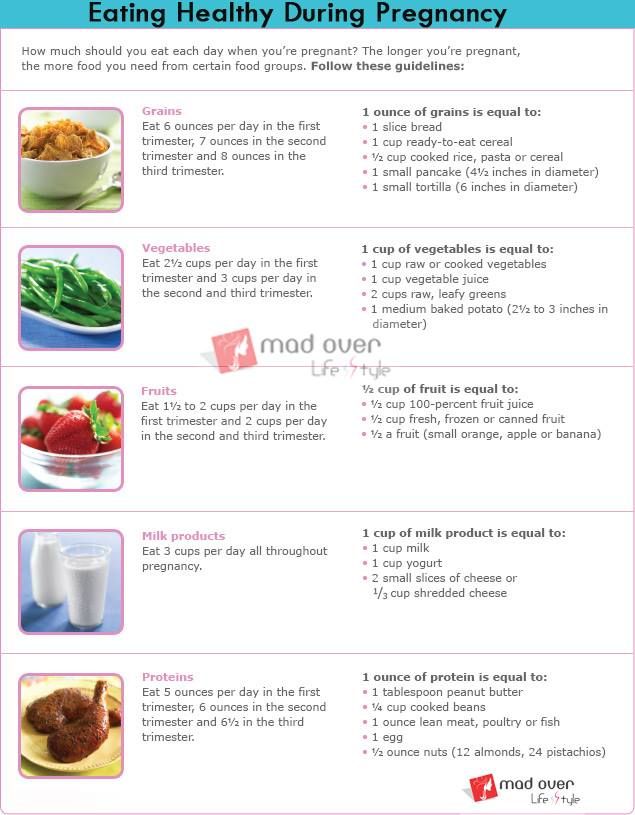

 5 servings
5 servings 
